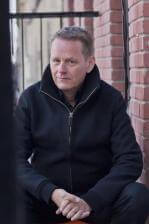3 Ways Small Data Can Uncover Big Trends
In this guest post, Small Data author Martin Lindstrom gives three examples of how you can use this tiny concept to uncover huge, influential trends.
A murder scene would be worth little without modern scientific detection techniques. A strand of hair containing the culprit’s DNA, a fingerprint unique to the villain—these can lead the police right to the murderer.
But did you know that we leave behind tiny emotional DNAs, too?
The way we place our shoes, organize our fridge, hang our paintings, or even use our toilet paper are all seemingly insignificant observations, which I call Small Data, that have the potential to reveal an astounding glimpse into who we really are, our true personalities, our needs and desires and hopes. On an individual level, Small Data can reveal if you’re extroverted and self-confident, if you’re shy about your lack of education, or if you have conflicts with your partner. They’ve also proven capable of determining your true age.
Your Twin Age
How many times have I felt I was the youngest person in a meeting, like a kid who’d entered the room by mistake, only to discover that everyone in the room is just about my own age? I wondered: Am I the only one with that experience? A ten-year-long experiment, taking me into the homes of more than 2,000 consumers across 77 different countries, revealed that, No, I’m not the only one. In fact, most of us feel substantially younger inside. I call this phenomenon “your twin age.”
Though I’m 46-years-old, I feel like I’m twelve. A friend of mine tells me he feels like he’s 25-years-old; his actual age is forty-seven. Why do my friend and I have such different twin ages? What determines someone’s twin age? What I’ve realized is that your own personal twin age is determined by the very first day in your life you felt emotionally free. When I was twelve years of age, I opened up my own advertising agency (yes, I’m strange, I admit it), and that year, time froze for me. My friend first moved away from his parents when he was twenty-five; that sense of freedom froze his twin age.
So, what is your real twin age? Wind back time, and you’ll be able to find out.
Your Self-Confidence Level
It may sound strange, but our homes reveal more about our true personality than anything else. Most of us believe the way we organize our stuff is pure coincidence, but nothing could be further from the truth. Here are some interesting insights.
Consider the paintings you hang in your home. The larger, more dramatic, and more colorful they are, the higher your self-esteem.
Each of us has a perception room in our home, the room we’ve decorated in order to tell a message to the world. It doesn’t necessarily express who we actually are; rather, it represents how we’d like to be seen by the world. Think of it as a three-dimensional Facebook page, which represents our ideal image. How do you find your perception room? Identify your coffee table book—or your similar object, the one thing you want visitors to see first—and you’ll be in your perception room.
But there’s more. If someone’s perception room contains large book shelves packed with books, you can be sure the person living in that home lacks an extensive education. In fact, that person is likely to feel somewhat intimidated by higher education. That person’s ostentatious display of books compensates for his or her lack of education.
Being “Present”
We’re rarely “present” these days. Picture yourself in an empty, bored moment. Say, you’re in a bar waiting for someone who’s running late. What do you do? If you’re like most of us, you pull out your smart phone, send a message, place a call, look up something online—anything so you don’t come across as a loser. But in doing this, you’re cutting yourself off from the world. You make yourself less present, less aware of what’s going on around you, and wasteful of a rare opportunity when you could be an amazing observer and people reader.
OK, I know—it’s hard, if not impossible, to live these days without a phone. I’m on “phone detox” myself, trying to become more present in my environment. But if you aren’t as stubborn as I am, how about trying this trick? The next time you’re waiting in an airport or in a train or bus station, close your eyes and listen to the people around you. Then imagine what they look like, how they’re dressed, and what they’re holding. After two minutes of this imaginative exercise, open your eyes and compare what you’ve pictured to the reality. I know it sounds crazy, but you’ll get better and better at it, until you can sometimes actually “see with your eyes closed.”
Small Data is all about those seemingly insignificant signals we leave behind. In fact, Small Data are right in front of you. Can you see them?
You can buy a copy of Small Data: The Tiny Clues That Uncover Huge Trends, out today, from Amazon, Barnes & Noble, IndieBound, Booksamillion, or Apple.







